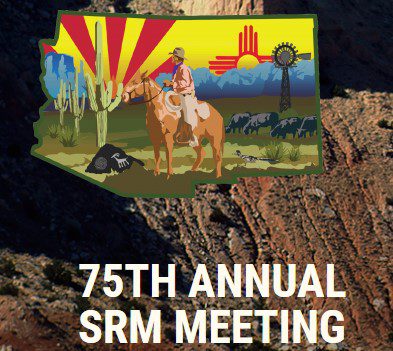Events

CA-NV Winter Status Update Webinar (Jan 2022)
Webinar recording. According to the January 18 U.S. Drought Monitor, 99.6% of CA/NV is in drought, with 9.8% in Extreme (D3) or Exceptional (D4) Drought. The area in D3/D4 is down from 69.9% just one month ago, reflecting the barrage of storms that have brought rain and snow to the region since mid-fall. These storms…

Bipartisan Infrastructure Bill: What does it mean for forest collaboratives?
Webinar recording. This webinar will include presentations and interactive breakout sessions to explore implications and opportunities for forest collaboratives: Larry Chambers, Change Management and Communication Lead, U.S. Forest Service Jake Donnay, Director, Legislative Affairs, U.S. Forest Service Steve Moyer, Vice President of Government Affairs, Trout Unlimited Bill Imbergamo, Executive Director, Federal Forest Resource Coalition

2022 Society for Range Management (SRM)’s 75th Annual Meeting
Meeting website. Join us in the heart of New Mexico for the 75th Annual SRM Meeting. The beautiful high desert rangelands, diverse cultures, authentic art, and painted skies of Albuquerque will make for a great meeting.

Invasion, fire, and the future of NW wildlands: Ventenata dubia in the Blue Mtns Ecoregion
Webinar recording. In this deep dive webinar, Dr. Becky Kerns and collaborating scientists will present and synthesize results from a Joint Fire Science funded project aimed at understanding the current and future Ventenata dubia (ventenata) invasion in the Blue Mountains Ecoregion. Wildfires in 2014 and 2015 in the ecoregion reportedly spread in an unusual fashion…

Science and management of wildfire, fish, and water resources in the western US
Webinar recording. Wildfire has increased 20-fold in the last 30 years in the Western U.S., partly due to climate change and partly due to forest and fire management practices. At…

Exploring the Interagency Fuel Treatment Decision Support System (IFTDSS)
Webinar recording. FTDSS is becoming a go-to tool for fuels planning across interagency partners. With its all-access web-based approach, IFTDSS makes fuels management planning accessible to fire practitioners at all…

Soil moisture 101: What it means, how it’s measured
Webinar recording. The National Integrated Drought Information System (NIDIS) and the National Weather Service (NWS) are pleased to host two webinars on soil moisture data and applications. The webinars are…

Aviation Use Summary (AUS): Analytics to inform decisions and manage wildfire risk
Webinar recording. Presented by: Crystal Stonesifer Aircraft are important fire management tools, but their use can bring substantial costs and associated risks. We developed the Aviation Use Summary (AUS), which is…

Forest Health in Oregon 2022: State of the State
Virtual conference proceedings. The Forest Health in Oregon: State of the State conference occurs every-other-year and is meant to summarize forest health issues in Oregon and the Pacific Northwest. The…

Modern approach to quantifying ungulate carrying capacity
Webinar recording. Presented by: Matt Reeves Estimating the number of animals that can be sustainably supported depends on numerous factors such as forage quantities, terrain, distance from water, and the type of vegetation being considered. Historically most approaches to conducting capacity estimates were limited by a paucity of spatially explicit data describing these factors. However, recent advances…

